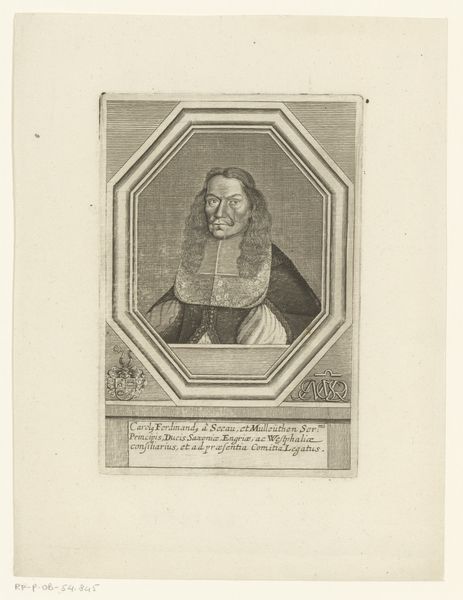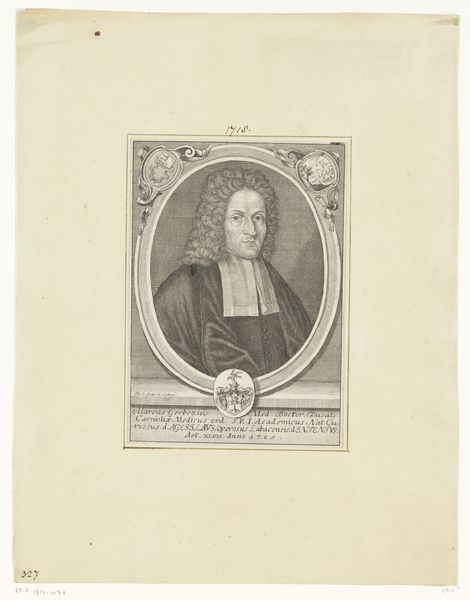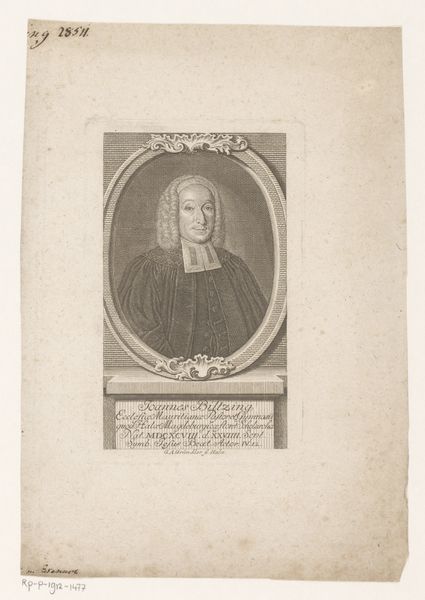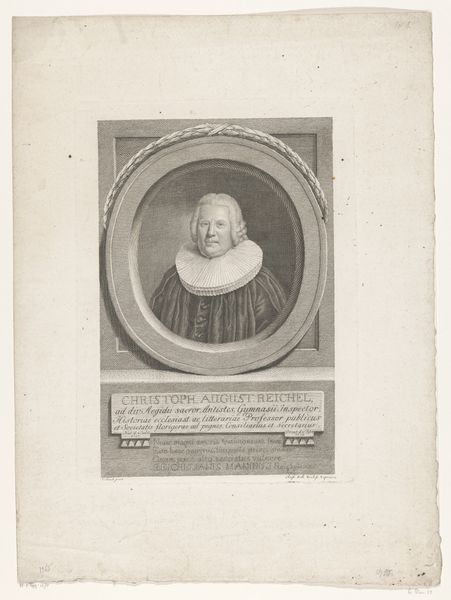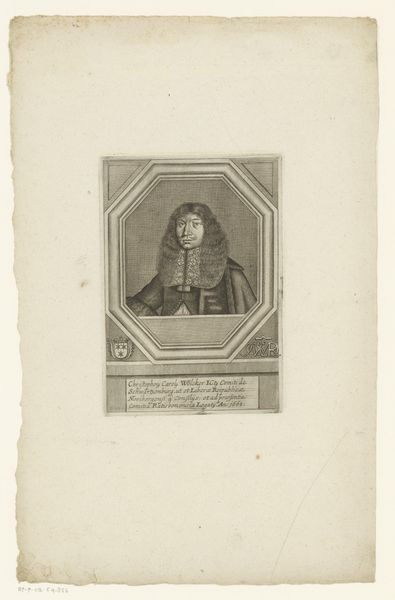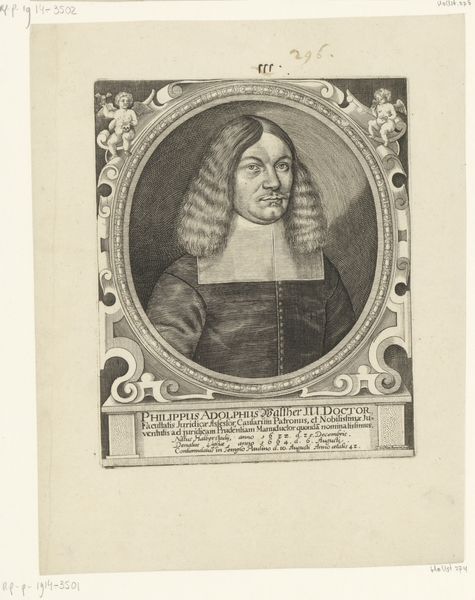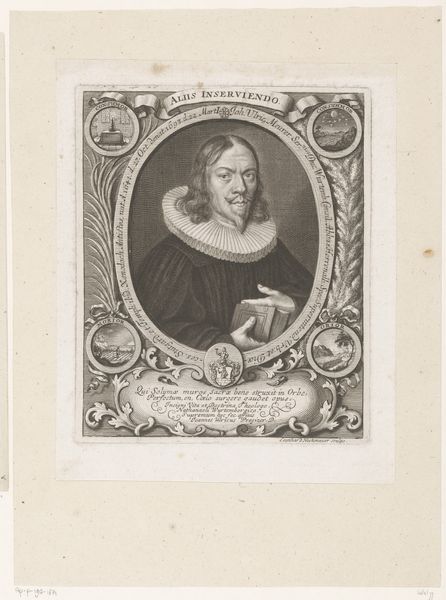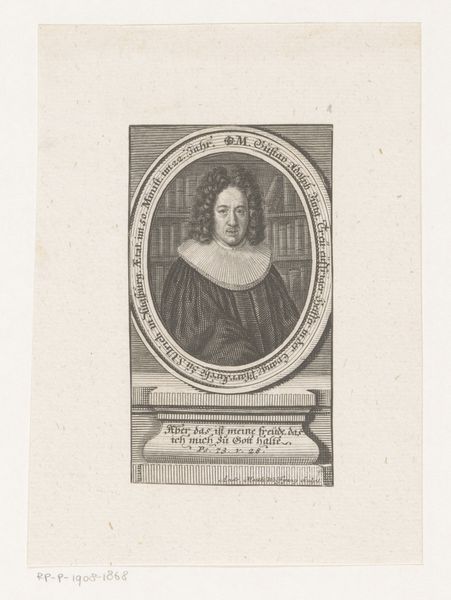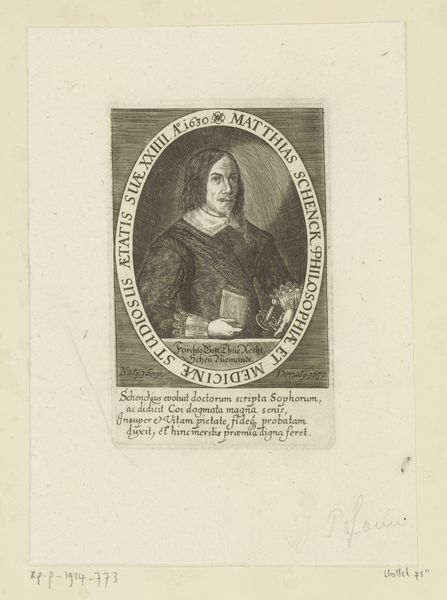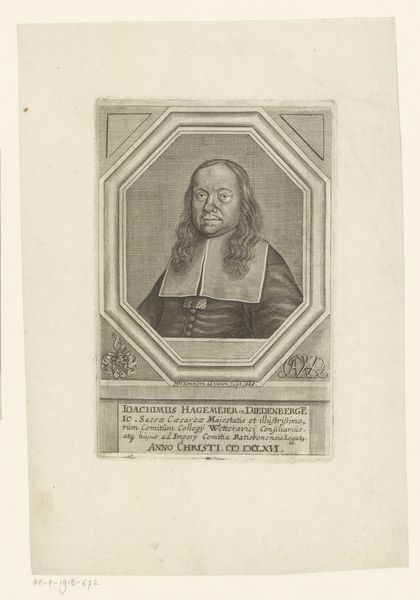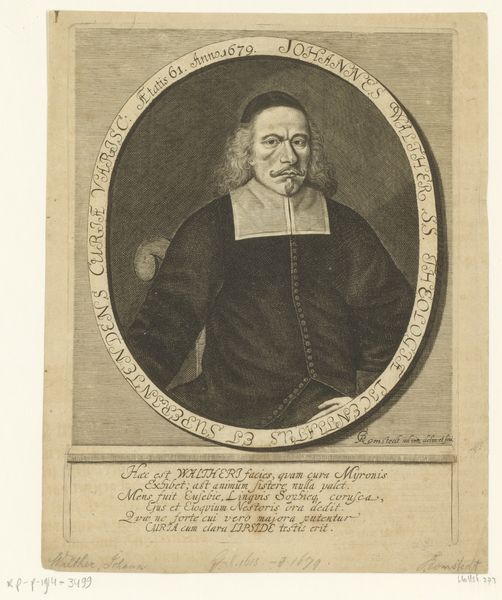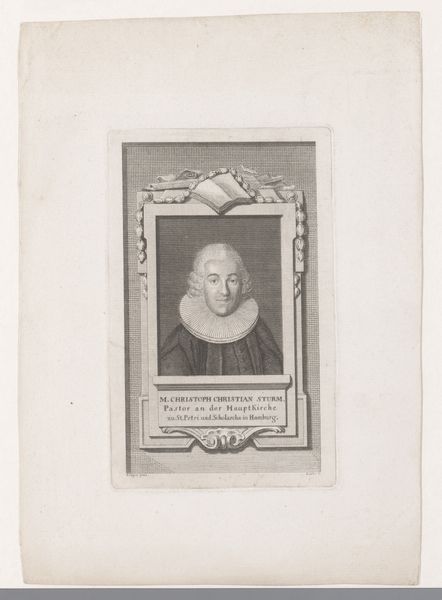
print, engraving
#
portrait
#
baroque
# print
#
history-painting
#
engraving
Dimensions: height 153 mm, width 105 mm
Copyright: Rijks Museum: Open Domain
Curator: Here we have a rather stately portrait of Johannes Krull. It's an engraving by Matthias van Sommer, created around 1667. Editor: It strikes me as quite serious, almost austere. The dark clothing, the severe expression... it's definitely communicating power, but also perhaps a kind of melancholy. Curator: Yes, engravings of prominent figures like this were often commissioned to project an image of authority. Krull was a jurist and Archbishopric administrator in Magdeburg. This image likely served as a way to solidify his standing within those circles. The inclusion of Latin text reinforces his education and erudition, locating him within an international scholarly community. Editor: Absolutely. The rigid octagon framing the portrait gives a sense of order, further reinforcing Krull’s status. I’m thinking about how these images would have circulated and who would have had access to them. This engraving could very well reinforce hierarchies in Krull's era, making it something only afforded to elites. How might more radicalized prints contest images like this? Curator: Precisely. Consider the accessibility of print versus painted portraits. This engraving made Krull's image more widely available, but distribution remained largely within established networks of power: other officials, intellectuals, and likely certain members of the merchant class. It becomes an interesting study in the construction of authority through accessible media, which also could influence the rising bourgeois class as well as be challenged as a result. Editor: And the choice of engraving itself as a medium – the fine lines, the meticulous detail – speaks to the importance placed on accuracy and likeness, at least as it was perceived at the time. How did it affect the reception to know someone owned a likeness that was likely pretty spot on? Curator: The details undoubtedly enhanced the perception of truth. And because these portraits became reproducible, the role of an engraver such as Matthias van Sommer is more than that of a simple copyist. He becomes a key figure in how individuals like Krull were represented and understood historically, creating an image of lasting symbolic importance. Editor: It's fascinating to consider how images like these participated in both reflecting and reinforcing social structures. Thank you for giving me a deeper glimpse at this artwork. Curator: It’s been insightful exploring this piece together and understanding its role in visualizing authority and influencing the social perception of powerful figures like Johannes Krull.
Comments
No comments
Be the first to comment and join the conversation on the ultimate creative platform.
